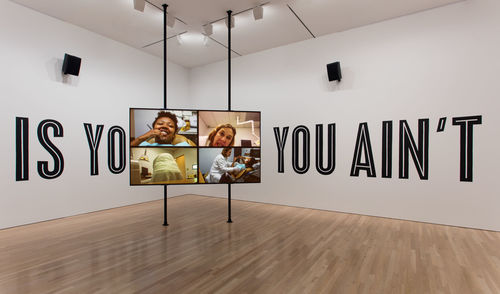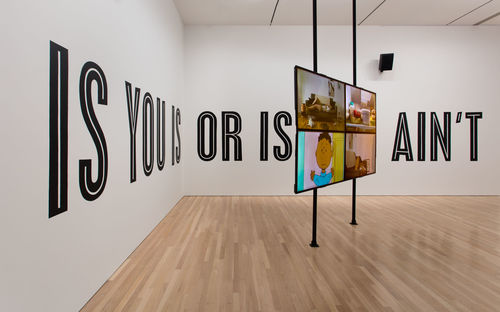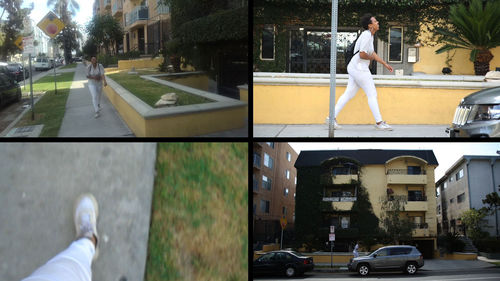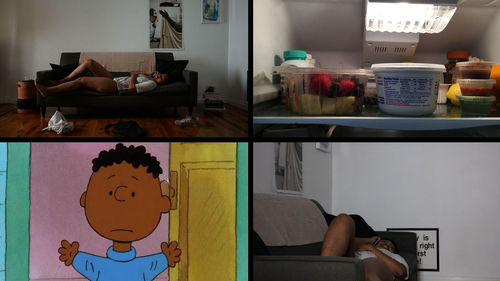
Martine Syms
Martine Syms draws on early cinema history and the language of television for “Laughing Gas,” the pilot episode of a situation comedy titled She Mad. This television series is part of an ongoing conceptual project that Syms initiated in 2015 with the work Pilot for a Show about Nowhere, which in its early stages took the form of an installation of documents, images, and research materials filtered through a semiautobiographical account of Syms’s life as a young black woman trying to “make it” as an artist in Los Angeles. The research for this project and a large part of Syms’s work to date is part of an investigation of the formation of black subjectivities on both sides of American television production. Syms addresses not only on-screen representation but the assumed target audiences within American television history. Early programs were responsible for giving, in Syms’s words, “visibility to a private black sphere.”
Syms’s Laughing Gas (2016) uses Edwin Porter’s 1907 silent film of the same title as a starting point for constructing a history of representation that extends into the present. Referring to a variety of visual forms and styles that reflect the evolution of cinematic tendencies into recent forms such as television, the Internet, and “ambient” footage produced by surveillance and body cams, Laughing Gas addresses the ways in which subjects and subjectivities have developed within and throughout the history of moving images. Porter’s nine-minute silent film featured Bertha Regustus, an African American actress whose character’s infectious laughter, triggered by the administration of nitrous oxide at the dentist’s office, affects everyone she encounters over the course of a single day. Notably, the film was one of the earliest examples of a black female actress performing an independent role on-screen, occupying an ostensibly independent position amid a context that would ordinarily feature white actors in blackface. By approximating the premise laid out by Porter’s film and casting herself in the role of “Martine” in a series of largely improvised scenes, Syms positions her own identity alongside those of contemporary viewers in relation to a history of cinema that otherwise presumed universal stories for a seemingly universal subject.














